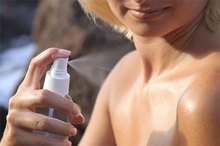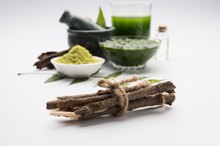How to Use Cedar Oil as an Insect Repellent
Cedar oil, which is extracted from the bark of cedar trees, is a safe and natural insect repellent that is particularly effective against fleas. By mixing pure cedar oil with other types of natural oils, such as citronella and lemongrass oil, you can repel mosquitoes as well.
Purchase pure cedar oil to use as an insect repellent throughout your home. When diluted with rubbing alcohol or distilled water, and poured into a spray bottle, cedar oil can be applied on carpeting, furniture and anywhere you might find flea activity. Cedar oil in spray bottles can usually be found at your local pet store.
How to Use Clove Oil as an Insect Repellent
Learn More
Mix cedar oil with lemongrass or citronella oil to create an insect repellent that will work equally on mosquitoes and fleas throughout your home. You can use a mixture of these oils to double the duration of the repellent, since each oil used independently can lose its potency after just 1 to 2 hours.
Add a few drops of cedar oil to your pet's shampoo for a natural way to combat fleas and other parasites from spreading in your home. Cedar oil, when used in moderation, is a very safe and natural way to keep insects away from your pets, and to hide odors as well. You can also place a few drops of cedar oil underneath the cushions of your pet's bed for extra protection against fleas and mosquitoes.
How to Apply Neem Oil
Learn More
Use your spray bottle of cedar oil to apply the solution on your clothing just before you go outside. While diluted cedar oil is generally safe to use on most fabrics, you may want to test a small area of clothing first to find out whether the cedar oil will cause a stain. Squirting a drop or two into pockets might be effective as well.
Ensure that cedar oil doesn't get into your mouth, eyes or nose when you apply it as an insect repellent, and use caution when applying cedar oil on small children, who may be tempted to taste or lick the aromatic substance. While cedar oil is generally safe to use externally, internal consumption could cause illness.
Tips
When using cedar oil to repel mosquitoes, take time to remove or replace standing water on your property. Bird baths, wading pools and your pet's water bowl should be emptied and cleaned at least every other week.
Related Articles
References
- PDQ Integrative, Alternative, and Complementary Therapies Editorial Board. Aromatherapy With Essential Oils (PDQ®): Health Professional Version. 2019 Oct 25. In: PDQ Cancer Information Summaries. Bethesda (MD): National Cancer Institute (US); 2002-.
- Rajmohan V, Mohandas E. The limbic system. Indian J Psychiatry. 2007;49(2):132-9. doi:10.4103/0019-5545.33264
- PDQ Integrative, Alternative, and Complementary Therapies Editorial Board. Aromatherapy With Essential Oils (PDQ®): Health Professional Version. 2019 Oct 25. In: PDQ Cancer Information Summaries [Internet]. Bethesda (MD): National Cancer Institute (US); 2002-.
- Sánchez-vidaña DI, Ngai SP, He W, Chow JK, Lau BW, Tsang HW. The Effectiveness of Aromatherapy for Depressive Symptoms: A Systematic Review. Evid Based Complement Alternat Med. 2017;2017:5869315. doi:10.1155/2017/5869315
- Hay IC, Jamieson M, Ormerod AD. Randomized trial of aromatherapy. Successful treatment for alopecia areata. Arch Dermatol. 1998;134(11):1349-52. doi:10.1001/archderm.134.11.1349
- Barnard DR. Repellency of essential oils to mosquitoes (Diptera: Culicidae). J Med Entomol. 1999;36(5):625-9. doi:10.1093/jmedent/36.5.625
- Takeda A, Watanuki E, Koyama S. Effects of Inhalation Aromatherapy on Symptoms of Sleep Disturbance in the Elderly with Dementia. Evid Based Complement Alternat Med. 2017;2017:1902807. doi:10.1155/2017/1902807
- Orchard A, Van vuuren S. Commercial Essential Oils as Potential Antimicrobials to Treat Skin Diseases. Evid Based Complement Alternat Med. 2017;2017:4517971. doi:10.1155/2017/4517971
- Barnard DR. "Repellency of essential oils to mosquitoes (Diptera: Culicidae)." J Med Entomol. 1999 Sep;36(5):625-9.
- Hay IC, Jamieson M, Ormerod AD. "Randomized trial of aromatherapy. Successful treatment for alopecia areata." Arch Dermatol. 1998 Nov;134(11):1349-52.
Tips
- When using cedar oil to repel mosquitoes, take time to remove or replace standing water on your property. Bird baths, wading pools and your pet's water bowl should be emptied and cleaned at least every other week.
Writer Bio
This article was written by the CareerTrend team, copy edited and fact checked through a multi-point auditing system, in efforts to ensure our readers only receive the best information. To submit your questions or ideas, or to simply learn more about CareerTrend, contact us [here](http://careertrend.com/about-us).







